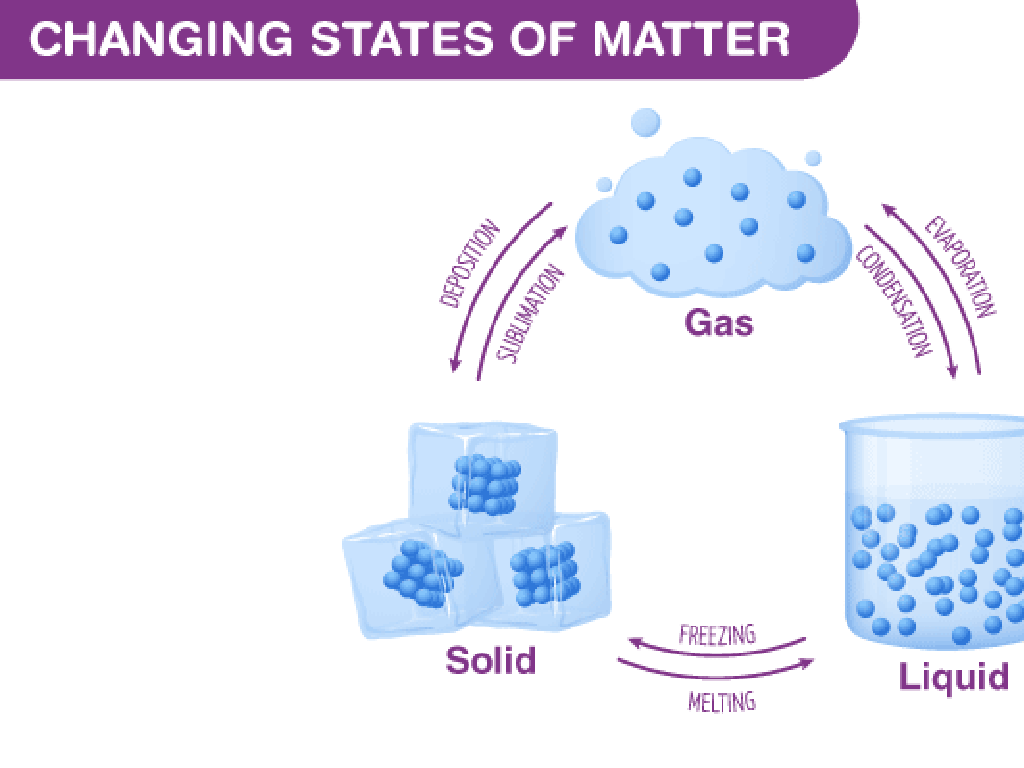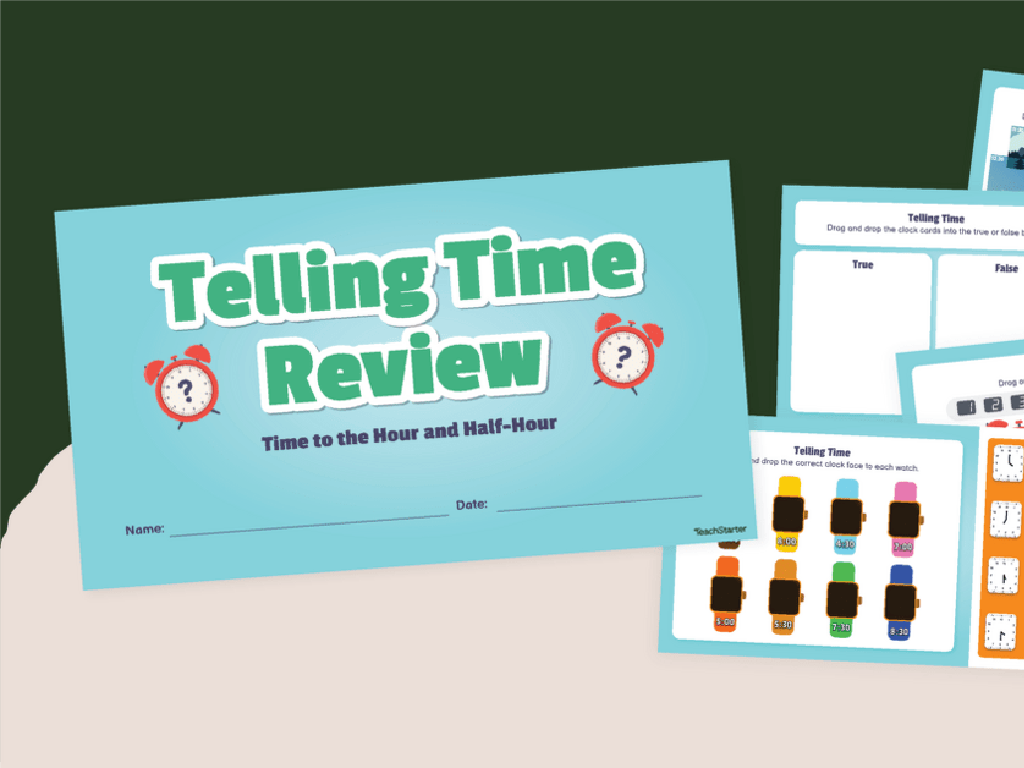Multi-Step Word Problems
Subject: Math
Grade: Fourth grade
Topic: Multi-Step Word Problems
Please LOG IN to download the presentation. Access is available to registered users only.
View More Content
Tackling Multi-Step Word Problems
– Understand multi-step problems
– Problems that require more than one step to solve.
– Real-life importance of these problems
– Helps with daily decisions like shopping, cooking, and budgeting.
– Learn to identify problem steps
– Recognize keywords and break down the question.
– Practice solving multi-step problems
– Use addition, subtraction, multiplication, or division in sequence.
|
This slide introduces students to the concept of multi-step word problems, which are problems that require more than one mathematical operation to solve. Emphasize the importance of these problems in everyday life, such as figuring out total costs while shopping or planning time for activities. Today’s goal is to help students learn how to identify the different steps needed to solve these problems and to practice the necessary skills. Encourage students to look for keywords in the problems that signal which operations to use and to write down each step as they work through the problem. Provide examples and guide them through the process of solving multi-step problems.
Understanding Multi-Step Word Problems
– Define Multi-Step Word Problem
– A problem that requires more than one step to find the solution.
– Single vs Multi-Step Problems
– Single-step: one operation; Multi-step: several operations.
– Everyday Multi-Step Problem Examples
– Buying groceries with a budget or planning a party with a guest list.
– Practice with Real-Life Scenarios
|
This slide introduces students to multi-step word problems, which are more complex than single-step problems as they require performing several mathematical operations to reach a solution. It’s crucial to explain that understanding the question is the first step, followed by breaking down the problem into smaller, manageable steps. Provide relatable examples such as managing a budget while shopping or organizing an event, which naturally involve multiple steps. Encourage students to think of these problems as stories where they need to combine different pieces of information to reach the end. In the next class, we will practice solving multi-step word problems based on scenarios they might encounter in their daily lives.
Key Words in Multi-Step Word Problems
– Identify signal words
– Words like ‘total’, ‘difference’, ‘product’ indicate steps
– Understand words’ impact
– Signal words change how we approach a problem
– Practice with examples
– Find and highlight words in problems that show multiple steps
– Key words guide problem-solving
|
This slide is aimed at helping fourth-grade students recognize and understand the importance of key words in multi-step word problems. These words act as signals that guide the students on what operations to use and the order to apply them. For example, ‘total’ may suggest addition, while ‘difference’ might indicate subtraction. Understanding how these words impact the problem-solving process is crucial. During practice, students should try to identify these key words in sample problems and determine the steps required to solve them. The teacher should provide several examples and guide the students through the process of highlighting and interpreting these words. This exercise will enhance their problem-solving skills and prepare them for more complex mathematical challenges.
Breaking Down Multi-Step Word Problems
– Read the problem carefully
– Highlight key information
– Look for numbers, units, and action words
– Write down each step’s goal
– What is the question at each step?
– Solve the problem step by step
– Use math operations to find the answer
|
This slide is aimed at teaching students a systematic approach to solving multi-step word problems. Emphasize the importance of reading the problem thoroughly to understand what is being asked. Guide students to identify and highlight crucial information such as numbers, units of measurement, and keywords that indicate mathematical operations. Encourage them to write down the goal of each step, which will help them organize their thoughts and determine the sequence of actions needed to find the solution. Finally, demonstrate how to apply appropriate math operations for each step to arrive at the final answer. Provide examples and practice problems to reinforce these strategies.
Solving Multi-Step Word Problems
– Tackle one part of the problem at a time
– Break down the problem into smaller, manageable steps
– Always check your work after each step
– Review each step to ensure accuracy before moving on
– Example: Solving a multi-step problem
– We’ll walk through an example together in class
|
This slide is aimed at teaching students a systematic approach to solving multi-step word problems. Emphasize the importance of not trying to solve the whole problem at once, but instead breaking it down into smaller, more manageable parts. After solving each part, students should check their work to make sure it’s correct before proceeding. Provide a clear, step-by-step example of how to approach a multi-step word problem, which will serve as a model for students to follow. During the class, walk through this example with the students, encouraging them to ask questions and think critically about each step. This will help them understand the process and apply it to different problems in the future.
Let’s Practice Multi-Step Word Problems Together!
– Class solves a problem step-by-step
– Discuss each step and the solution
– Break down the problem, discuss strategies and how we arrive at the solution
– Q&A session on the problem-solving process
– Clarify doubts, ensuring understanding of each step
– Encourage participation and questions
– Foster a supportive environment for curiosity
|
This slide is designed to engage the entire class in a collaborative problem-solving activity. Start by presenting a multi-step word problem on the board and guide the students through solving it step-by-step. Encourage students to contribute to each step of the process, fostering a discussion on different strategies that can be used. After solving the problem, open the floor for a Q&A session, allowing students to ask questions and clarify any doubts they may have. This will help reinforce their understanding of multi-step problems. The teacher should provide positive reinforcement and ensure that all students feel comfortable participating. Prepare 4-5 different problems in advance, so that students can work on them in groups or pairs, and then share their solutions with the class.
Independent Practice: Tackling Multi-Step Problems
– Work on problems by yourself
– Use strategies from our lesson
– Think ‘What’s my first step?’ and ‘What comes next?’
– Remember, mistakes are okay
– Every mistake is a learning opportunity
– Ask for help when needed
– Teachers and friends can guide you
|
This slide is meant to guide students into an independent practice session where they will attempt to solve multi-step word problems on their own. Emphasize the importance of applying the strategies they’ve learned in class, such as breaking down the problem into smaller steps, looking for keywords, and performing one operation at a time. Remind them that making mistakes is a natural part of the learning process and that they should not be discouraged. Encourage them to seek help from teachers or peers if they are struggling with a problem. Provide a variety of problems with different contexts to ensure that all students can find problems that resonate with them. Offer at least four different activities, such as solving a puzzle, creating their own word problem, peer-teaching a concept, or using manipulatives to visualize the problem.
Share and Reflect: Multi-Step Word Problems
– Students present their solutions
– Discuss various problem-solving methods
– How did others tackle the problem differently?
– Reflect on effective strategies
– Which strategies were most successful and why?
– Encourage group discussion
|
This slide is aimed at fostering a collaborative learning environment where students are encouraged to share their individual problem-solving methods for multi-step word problems. It’s an opportunity for them to explain their thought process and the steps they took to arrive at their solutions. The teacher should facilitate a discussion on the different approaches used by students, highlighting the diversity of methods that can lead to the correct answer. Students should be guided to reflect on the strategies they found most effective, promoting metacognitive skills. The teacher can prepare guiding questions to help students articulate their reflections and can also provide feedback on the various strategies discussed. This activity not only reinforces mathematical concepts but also enhances communication skills and builds confidence.
Class Activity: Problem-Solving Relay
– Form teams for problem-solving
– Each member solves a problem step
– Work together to complete the problem
– First team with correct solution wins
|
This activity is designed to encourage teamwork and collaborative problem-solving skills. Divide the class into small groups, and provide each team with a multi-step word problem. Each student in the team is responsible for solving one step of the problem, and they must work in sequence. This exercise will help students understand the importance of each step in a multi-step problem and how they connect to reach a solution. The first team to solve the problem correctly earns a point for their team. To ensure a smooth relay, prepare several problems so that teams can rotate and try different ones. Possible activities include word problems involving operations with numbers, understanding time intervals, or calculating money. This will also help students to communicate mathematical thinking and verify each other’s work for accuracy.
Wrapping Up: Multi-Step Word Problems
– Review of multi-step problems
– Homework: Solve problems
– Tackle a variety of problems to strengthen skills
– Remember: Practice is key
– Keep practicing at home!
– The more you solve, the better you get!
|
As we conclude today’s lesson on multi-step word problems, it’s important to recap the strategies we’ve learned. For homework, students will be given a set of problems that require them to apply these strategies. Remind students that becoming proficient at solving multi-step word problems takes practice. Encourage them to approach their homework with a positive mindset and to attempt each problem methodically. The homework will not only reinforce today’s lesson but also help students become more comfortable with complex problem-solving. Remember to praise their efforts and progress to build their confidence.






